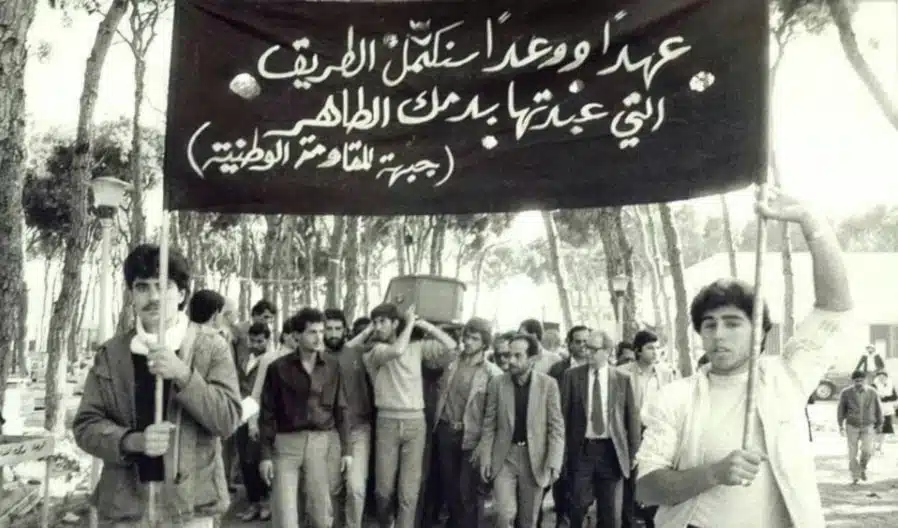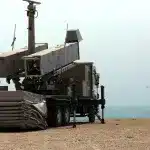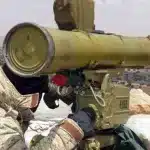
By Khaled Barakat – Aug 13, 2025
Perhaps the late Iraqi poet Muzaffar al-Nawwab was the first to grasp this organic bond between the southerners and their weapons. In his poem RPG, named for the launcher with which their young men burned the tanks and armored vehicles of the enemy and its agents, he says:
“His unit advanced / crossed the Litani / We lost him / we followed the scent of courage and blood / and found him / we tried to take his rifle / but couldn’t / We buried him with his rifle in the plain.”
Jabal Amel; a proud promontory stretching from the foothills of Mount Hermon in the east to the rolling hills of Galilee in the south. A land where the Lebanese resistance took its first steps and the struggle against oppression became a distinct form of cultural expression. Today, as imperial powers and their local proxies work to strip this land of its arms, we present some archival staples of Jabal Amel’s resilience. An epic of pride and defiance, written by resistance fighters from all backgrounds, protecting the land and preserving the dignity of southerners.
1920: Adham Khanjar and Sultan Pasha al-Atrash

When the revolutionaries of South Lebanon surrendered under French fire and steel, Adham Khanjar broke away, fearing execution as he was sentenced to death. He fled into the wild, hiding himself, but never discarding his weapon.
Learning that General Gouraud was coming to the Golan to visit Muhammad al-Faour, leader of the Al-Fadl tribe, Adham rushed to intercept him. He fired at the general but missed. The French knew immediately who was responsible and launched a massive manhunt, promising a large reward for his captured, dead or alive. But their efforts failed as Khanjar remained in hiding, moving constantly, from a valley’s depths to a mountainside, until he reached Sultan al-Atrash’s village.
Exhausted, Adham fell asleep while waiting for Sultan to return. Early in the morning, he woke up to loud noises near the guesthouse and at the door. Fearful, he looked for an escape but was surprised to see officers and police surrounding the house, blocking all exits. With pistols pointed at him, Adham was swiftly captured, then transferred to the Citadel of Suwayda.
At dawn, French officers and police surrounded the guesthouse and captured him. Gouraud ordered a plane from Damascus to take him to Beirut. When Sultan learned this, he gathered his men and blocked the road at Talaah village, hoping to intercept a land convoy.
General Gouraud ordered a plane from Damascus to transfer Adham Khanjar to Beirut. Shocked by the news, Sultan Pasha al-Atrash quickly gathered his men and stationed them at the village of Talaah near Suwayda, hoping to intercept any French vehicles carrying the prisoner by land.
Sultan and his men attacked a convoy of armored French vehicles coming to reinforce the citadel’s garrison. They struck one vehicle that was firing machine guns without retreating and managed to destroy it. When news arrived that Adham was being sent by plane, Sultan raised his hands to the sky, saying: “We have no power up there, but here on land, we are ready to sacrifice our lives for our dignity.” Sultan Pasha burned his guesthouse in a show of honor and openly declared revolution against the French Mandate.
On November 30, 1920, Lebanese newspapers reported Adham’s execution in Beirut. He refused a blindfold, stood facing the soldiers, and was shot in the head. His body was buried in Bashoura.
Sources: Al-Barq and Lisan Al-Hal newspapers, May 1923.
1984: The village of Maarakeh fights with boiling oil

The resistance in 1984 intensified its operations against the Zionist enemy in Tyre and what became known as the Seven Villages. In response, Zionist forces besieged these villages in South Lebanon, including Maarakeh, arresting leaders and fighters. The resistance, led by martyr Khalil Jradi, vowed to confront the “Iron Fist” policy with what he called the “Husseinite Fist,” invoking Imam Hussein’s stand at Karbala.
The occupation surrounded Maarakeh with hundreds of soldiers, tanks, and aircraft. Mosques called out “Allahu Akbar,” and villagers of all ages poured into the streets. They burned tires, threw stones and Molotov cocktails, and women poured boiling oil on advancing soldiers. Confused and unprepared for such resistance, the soldiers fired randomly. People chanted the Takbeer and Sayyed Mousa al-Sadr’s slogan: “Israel is pure evil.”
Fighting raged from dawn to evening. Three of Al-Risala scouts, Mahmoud Khalil, Hussein Saad, and Sami Mustafa, were martyred. The Israeli soldiers retreated from the village, failing to arrest resistance fighters or take control of Maarakeh. The clashes spread to neighboring villages, with the “Iron fist” broken by the Husseinite fist.
Source: Amal Movement internal bulletin, 1984.
1985: Sanaa Mehaidli, bride of the South

On the morning of April 9, 1985, a southern girl named Sanaa Muhaidli drove a car loaded with 200 kilograms of TNT into an Israeli convoy in Jezzine. The blast killed and wounded around 50 soldiers, destroyed vehicles, and spread panic among the occupiers.
Her final message, broadcasted by the Syrian Social Nationalist Party and the Lebanese National Resistance Front, read:
“I am from a group that decided to die for liberation. I am the martyr Sanaa Mehaidli, 17 years old, from occupied and oppressed South Lebanon, from the resisting and revolutionary South, the home of martyrs like Sheikh Ragheb Harb, Abdullah al-Jizi, Hassan Darwish, Nazih Kobrosli, Bilal Fahes, and last but not least, the heroic martyr Wajdi al-Sayegh.
I took this decision as part of a group that chose martyrdom to liberate our land and people after witnessing the tragedy of being under occupation; oppression, injustice, killing of children, women, elders, and destruction of homes.
I am very comfortable with my choice to fulfill my duty. I call on all young men and women of my country to join the ranks of the national resistance, which alone can expel the enemy from our land.
I hope to succeed in my operation and kill the greatest number of enemy soldiers, so my soul can unite with all the souls of the martyrs before me. I did not die; I am alive among you… I move… I sing… I dance, I do as I wish. My last wish is that you call me the bride of the South.”
Source: Lebanese National Resistance Front, 1985.
1985: Lebanese National Resistance Front destroys the spies’ television station

Thirty-five years after destroying the headquarters of the Middle East TV station run by Antoine Lahad’s militia, the Lebanese Communist Party issued a detailed statement clarifying the heroic operation:
On November 22, 1985, in response to Israeli military provocations, occupation pressure, and hostile media propaganda, the Lebanese National Resistance Front targeted the Middle East television station near Maroun al-Ras in Bint Jbeil. The station, run by Mossad officers and U.S. experts, was destroyed to silence its broadcasts.
At 1:10 am, fighters cut through the razor wire and planted five charges: two on the antennas, one in the broadcasting room, one at the guard post, and one timed for 8 am Explosions followed in sequence between 1:45 and 3:07 am, with the final timed blast at 8 am.
The group also planted two anti-tank mines, one on the road from Maroun al-Ras to the station, the other on the road from al-Maslakh neighborhood in Bint Jbeil to the station, both detonated as enemy armored vehicles approached the destroyed station.
Source: Lebanese Communist Party, November 2020.
1986: Operation Toumat Niha

On September 14, 1986, Islamic Resistance fighters stormed the Toumat Niha hill site near Ain Majdalin (Jezzine) and killed a number of Lahad militia members, seizing weapons and ammunition. The militia admitted to three dead and four wounded, while the National News Agency reported two missing. Occupation forces dispatched a large unit to retake the site, but the resistance had already withdrawn.
According to Al-Safir newspaper sources in western Bekaa, a 15-member Islamic Resistance unit attacked the militia garrison with rifles and rocket-propelled grenades, swiftly overrunning the position. A Bekaa-based resistance source said the militia at the site was “completely wiped out,” with one fighter captured, blindfolded, and taken away in a civilian vehicle. The attackers seized a 12.7 mm machine gun, a 60 mm mortar, twelve Kalashnikov rifles, military uniforms bearing Hebrew writing, and dismantled four mounted automatic weapons on vehicles before burning them.
Another source confirmed that the raid left 20 dead and wounded, destroyed three vehicles, and yielded further weapons: a 14.5 mm machine gun, two 12.7 mm machine guns, an 81 mm mortar, ten MAG machine guns, and seven rocket launchers.
The militia’s radio network acknowledged the attack, reporting that the resistance overran the site after an hour of preparatory artillery and mortar fire from multiple directions, but did not hold it. It confirmed three killed and four wounded in heavy fighting, and said reinforcements were sent, only for a landmine to detonate under one of their vehicles, destroying it and injuring four more.
The bodies of the militia fighters were kept in Jezzine hospital’s morgue without names being released, suggesting higher casualties than officially reported. Meanwhile, the Lebanese Army’s First Brigade, positioned on the Maidoun axis, clashed with militia reinforcements attempting to reach the site, exchanging machine-gun and rocket-grenade fire for nearly two hours.
Khaled Barakat
Khaled Barakat is a Palestinian writer and a member of the Executive Committee of the Masar Badil, the Palestinian Alternative Revolutionary Path Movement.
- Khaled Barakat#molongui-disabled-link
- Khaled Barakat#molongui-disabled-link
- Khaled Barakat#molongui-disabled-link




